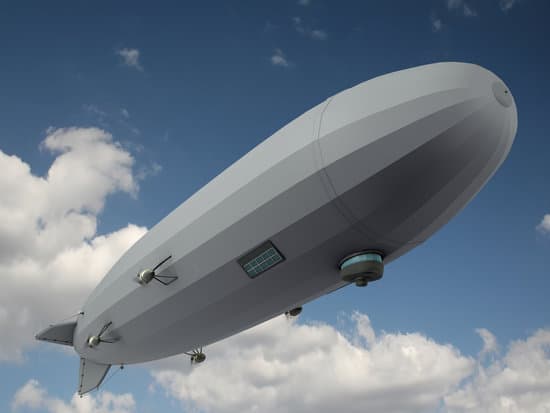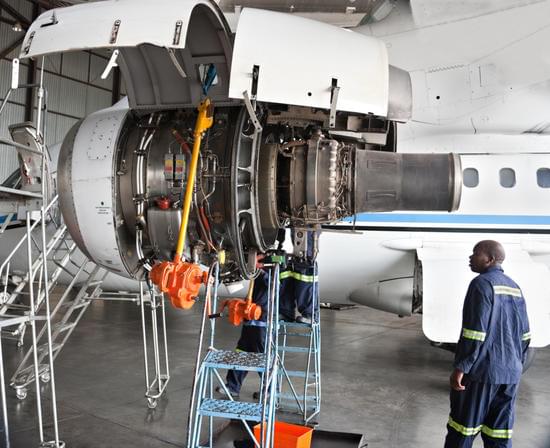MRO Industry Takes Note as Airships Take to the Skies Once Again

Airships, those lumbering, hulking dirigibles from the Zeppelins of black-and-white newsreels to the Goodyear blimps floating over sporting events of your youth are making a comeback in a big way and the maintenance, repair, and overhaul (MRO) industry is appropriately taking note.
Making the most (air)waves is the world’s largest aircraft, LTA Research’s Pathfinder 1, which was unveiled to the press and public just over a month ago in Silicon Valley.
“The airship — its snow-white steampunk profile visible from the busy 101 highway — has taken drone technology such as fly-by-wire controls, electric motors, and lidar sensing, and supersized them to something longer than three Boeing 737s, potentially able to carry tons of cargo over many hundreds of miles,” wrote Mark Harris for TechCrunch.
Lisa M. Krieger in the San Jose Mercury News covered the rollout at iconic Moffett Field and said: “Someday it could carry up to five tons of cargo and float from San Francisco to Chicago. Pathfinder 1 will be the largest aircraft to take to the skies since the ill-fated Hindenburg dirigible of the 1930s, a major air disaster that was broadcast to people all over the world.”
Google Co-Founder Aims for Zero-Carbon Passenger Transport
Silicon Valley is home to this new prototype electric airship because LTA Research is the brainchild of Google co-founder Sergey Brin, who is looking to create airships that help with disaster relief as cargo transport when traditional roads and airports are damaged as well as a method of zero-carbon passenger transportation.
The giant airship uses the more stable gas helium instead of the highly flammable hydrogen and consists of several emerging technologies that the MRO industry will someday have to address, perhaps sooner than later when these airships become a reality before test flights.
"I’m excited about the potential of not building just one airship but laying the foundation for many airships to be built,” said LTA Research XCEO Alan Weston told TechCrunch. “The innovations and the technologies that we’re about to demonstrate have the potential to lay the foundation for a new industry.”
MRO Industry Faces Challenges When New Variants Emerge
The MRO industry is constantly facing challenges when newer aircraft variants enter the market, and the rebirth of airships will be no different.
It will take time for the MRO industry to be ready to maintain and service revolutionary new aircraft.
“New aircraft types and variants on existing types require training, tooling, inventory, and regulatory approvals before an MRO can carry out maintenance. This comes at a cost,” explains MRO Business Today.
While MRO operators will be tasked with the maintenance, repair, and overhaul of these new aircraft, it’s not always feasible, let alone profitable, to meet these needs when only prototypes and limited production exist.
“The new generation of aircraft currently with a limited number of fleets operated across the globe. As modernization and sustainability are increasing the demand for such aircraft, the pace of operations and production is still relatively low, shaping the paradox of the crucial MRO services needed, without actual feasibility of such operations,” said MRO Business Today. “In other words, MRO businesses are challenged to invest in tooling, training, and certifications, while prospects of such developments are yet to come in the future.”
The Technology and Materials Making Today’s Airships Soar
The Pathfinder 1 is massive at almost 410 feet long – almost double the size of the Goodyear blimp which averages less than 250 feet – and can cruise up to 75 miles per hour.
Some of the emerging technology and new materials that make up the Pathfinder 1 include:
- Helium gas is held in 13 giant rip-stop nylon cells, monitored by lidar laser systems.
- 10,000 carbon-fiber reinforced tubes and 3,000 titanium hubs help form a protective skeleton around the gas cells.
- The airship's outer skin is lightweight synthetic Tedlar.
- There are 12 electric motors powered by diesel generators and batteries to enable vertical take-off and landing (VTOL).
- Pilots steer the airship using a joystick and fly-by-wire system which has sensors to automatically feedback data to control all the motors.
Airships Future May Lean Towards Cargo Side of Aviation
Don’t expect the re-emergence of airships to change passenger aviation any time soon, if ever, as the advantages of these lighter-than aircraft may lie on the cargo side of aviation.’
Aviation Week reported a year ago that “Blimps Could Make a Comeback as Freighters and Regional Transports”.
“Airships might not be a common sight in the 2020s, but there are many people of the belief that they will soon be making a comeback — particularly in the logistics industry, transporting cargo. In fact, CNN reported that independent estimates put the value of the airship market at $50bn over the next 20 years,” reported the Sent Into Space website in October.
Leading up to the big Pathfinder 1 news were a series of stories in Aviation Week since August on airships including:
- Spain’s Air Nostrum Group, parent of regional airline Air Nostrum, has doubled its reservations for Airlander 10 airships to 20 of the 100-passenger aircraft, UK developer Hybrid Air Vehicles says.
- A Czech company is preparing for the first flight of its prototype stratospheric airship next May with which it hopes to capture a slice of the burgeoning high-altitude pseudo-satellite (HAPS) market.
- Lockheed Martin Passes Destiny of Its Hybrid Airship to Startup AT².
- Canadian North Airlines has signed a memorandum of understanding (MOU) with Flying Whales to study the potential for operating large cargo airships in Northern Canada and the High Arctic.
For some, the hope is that airships not only play a role in cargo and logistics but also be a green solution that can help the world in a time of crisis.
“Pathfinder’s outing has offered a vision of what aviation could look like years from now — one in which aircraft don’t emit dangerous greenhouse gases,” wrote Krieger. “It could move people and things that don’t need to travel very quickly, such as delivering humanitarian aid to remote disaster sites. Traditional aircraft often can’t land in damaged landscapes.”
Weston, for his part, is realistic about the role of airships in the future: “I believe that airships can perform a complementary function,” in addition to other efforts, “to provide humanitarian aid and disaster relief. Airships could also play a role in the reduction of the carbon footprint of transportation. They’re not going to eliminate airplanes, but I see a path to decarbonization.”
For now, Pathfinder 1 is still tethered and doing tests just a few feet off the ground with the FAA approving flights of no higher than 1,500 feet for the first 50 flights. Pathfinder 1 will soon be moved to Akron, Ohio, where LTA Research already has a larger airship (Pathfinder 3) in the works.



